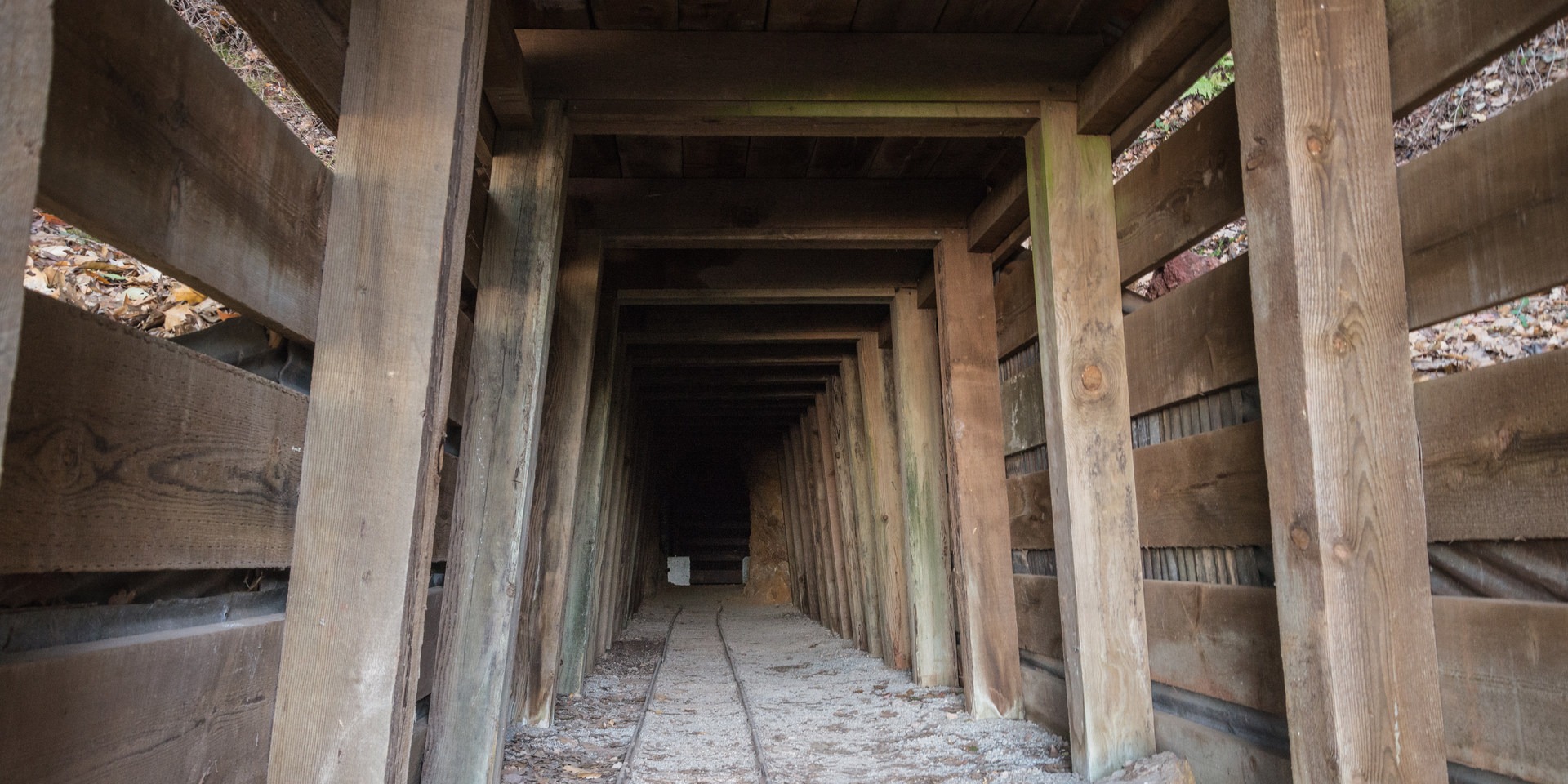You are here
Three years before gold was discovered in California, the New Almaden Quicksilver Mine was already refining cinnabar for the purpose of extracting mercury, making it the first mining operation in the state. Commonly known as quicksilver, this silvery-white element has many industrial uses, including its role in the separation of silver and gold from ore. As California's gold rush exploded in the mid 1800s, so did the need for quicksilver to process the gold. This made the New Almaden Mine the second largest quicksilver mine in the world, and it was more profitable than any California mine in history, with an estimated $70,000,000 in product.
During the next 15 years, the campus around the mines grew to three different camps comprised of 700 buildings that housed 1,800 residents. In 1862, the Quicksilver Mining Company of New York and Pennsylvania won ownership of the mines in a legal battle, and they continued to operate until 1912 when they declared bankruptcy. Afterwards, the camps dwindled down until their final removal as part of a Civilian Conservation Corp project. In 1976, the property was converted into a Santa Clara County Park.
The Historic Trail takes you on a dog-friendly, self-guided 5-mile hike through six different trails and 15 points of interest around the park. The first marker on the tour is entry into the Hacienda Camp Area, which is now one of three access points into the park. In the parking area, a display of various mining tools and machinery that were used can be found along with informational diagrams explaining their use. This is the second point of interest on the tour.
At the far end of the parking lot, the trailhead for Deep Gulch Trail can be found. This is a steep 1.2-mile hike that passes Hairy Shaft (the third point) and connects to English Camp Trail. Take this for a half-mile until you reach English Camp (the fourth point). This was a site that was later established to house immigrant miners from Cornwall. Here you can find a shady picnic area and a few dilapidated buildings including the camp mine office and map house. An English Camp/Mount Madonna Conservation Cops memorial can be found here as well. English Camp Trail continues to the left of this memorial. Take this trail briefly until you get to the Yellow Kid Trailhead.
Yellow Kid Trail connects English Camp to Spanish Town, the largest of the three camps. The trail still climbs in elevation, allowing you to catch some amazing views of the Santa Cruz Mountains and lower Central Valley. Another picnic table awaits once you reach the fifth point on the tour. Spanish Town is a great spot to hydrate and take in the view. If you are feeling energetic, from here you can take a short detour down Hidalgo Cemetery Trail. This is not on the self guided tour, though it is a quick hike that has some worthwhile vistas along the way.
Just below Spanish Town you will find the Rotary Furnace. This is where the miners cooked the cinnabar in the final stages of the extraction process. This is also where you will find the Hanging Tree, the site of a 19th-century hanging. The furnace and tree are the sixth and seventh points on the tour. Continue to the left of the Rotary Furnace for a short distance and soon you will connect to Castillero Trail. Follow this trail for just over a half mile to Bull Run, the eighth point. Here you will find another picnic area with a great view. The Catherine Mine is not on the tour, but it is a short distance away. If you are looking for a great view of the Silicon Valley, this is arguably one of the best you can find in all of South Bay.
The Mine Hill Trailhead starts at Bull Run. This is the next trail you need to take to finish the Historic Trail. Mine Hill Trail is a winding descent back to the Hacienda parking area, with the exception of a small loop on April Trail that is part of the guided tour. Follow Mine Hill until it connects with April Trail. Along the way you will pass Cristobal Mine and get another view of San Jose, the tenth and eleventh stops. Take the April Trail past the Powder House and the April Mine Trestle, the twelfth and thirteenth stops. Once back on Mine Hill Trail, follow it for about 2 miles back to the parking lot. At the fourteenth stop, look up in the mountains to see a chimney that used to release the sulfuric acid into the air during the refining process, which subsequently produced acid rain. The last stop on the tour is the site of the Tramway that used to bring ore down from the mountains to be processed at the Hacienda Reduction Works. Parking is just beyond this point.
Logistics + Planning
Current Weather: Powered by Dark Sky






























Comments
Sign In and share them.